







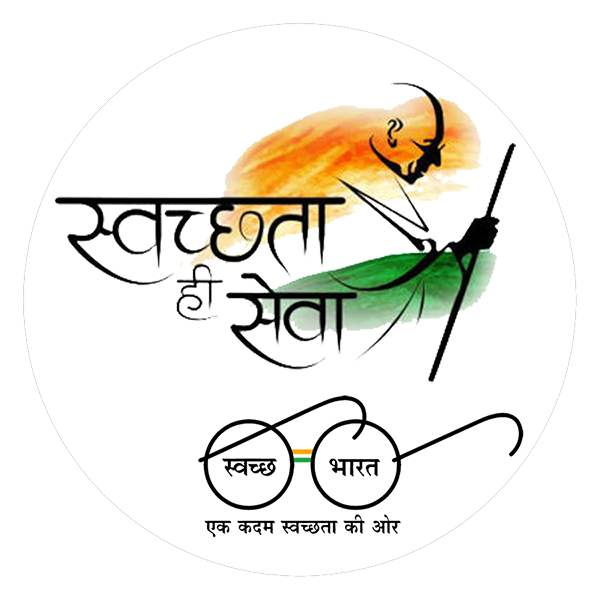
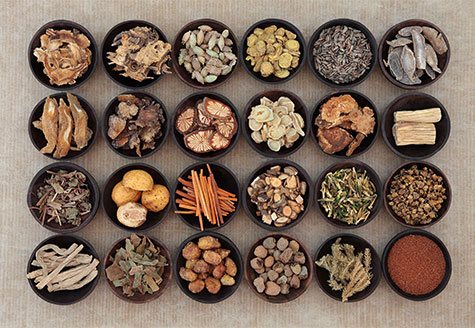
100% PURE is the most healthy and most nourishing medicine for your health made from pure ayurveda.
We provide the best quality herbal medicine and products, and you will see results after consistent use
The richness of Ayurveda has much to offer people worldwide. Making Ayurvedic formulations easier to dose only makes it more attractive to more people
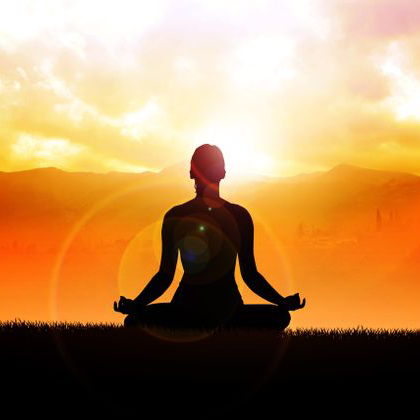
Ayurveda places great emphasis on prevention and encourages the maintenance of health through close attention to balance in one’s life, right thinking, diet, lifestyle and the use of herbs. Knowledge of Ayurveda enables one to understand how to create this balance of body, mind and consciousness according to one’s own individual constitution and how to make lifestyle changes to bring about and maintain this balance. Just as everyone has a unique fingerprint, each person has a particular pattern of energy—an individual combination of physical, mental and emotional characteristics—which comprises their own constitution. This constitution is determined at conception by a number of factors and remains the same throughout one’s life. Many factors, both internal and external, act upon us to disturb this balance and are reflected as a change in one’s constitution from the balanced state. Examples of these emotional and physical stresses include one’s emotional state, diet and food choices, seasons and weather, physical trauma, work and family relationships. Once these factors are understood, one can take appropriate actions to nullify or minimize their effects or eliminate the causes of imbalance and re-establish one’s original constitution. Balance is the natural order; imbalance is disorder. Health is order; disease is disorder. Within the body there is a constant interaction between order and disorder. When one understands the nature and structure of disorder, one can re-establish order.
Ayurveda identifies three basic types of energy or functional principles that are present in everyone and everything. Since there are no single words in English that convey these concepts, we use the original Sanskrit words vata, pitta and kapha. These principles can be related to the basic biology of the body. Energy is required to create movement so that fluids and nutrients get to the cells, enabling the body to function. Energy is also required to metabolize the nutrients in the cells, and is called for to lubricate and maintain the structure of the cell. Vata is the energy of movement; pitta is the energy of digestion or metabolism and kapha, the energy of lubrication and structure. All people have the qualities of vata, pitta and kapha, but one is usually primary, one secondary and the third is usually least prominent. The cause of disease in Ayurveda is viewed as a lack of proper cellular function due to an excess or deficiency of vata, pitta or kapha. Disease can also be caused by the presence of toxins. In Ayurveda, body, mind and consciousness work together in maintaining balance. They are simply viewed as different facets of one’s being. To learn how to balance the body, mind and consciousness requires an understanding of how vata, pitta and kapha work together. According to Ayurvedic philosophy the entire cosmos is an interplay of the energies of the five great elements—Space, Air, Fire, Water and Earth. Vata, pitta and kapha are combinations and permutations of these five elements that manifest as patterns present in all creation. In the physical body, vata is the subtle energy of movement, pitta the energy of digestion and metabolism, and kapha the energy that forms the body’s structure.

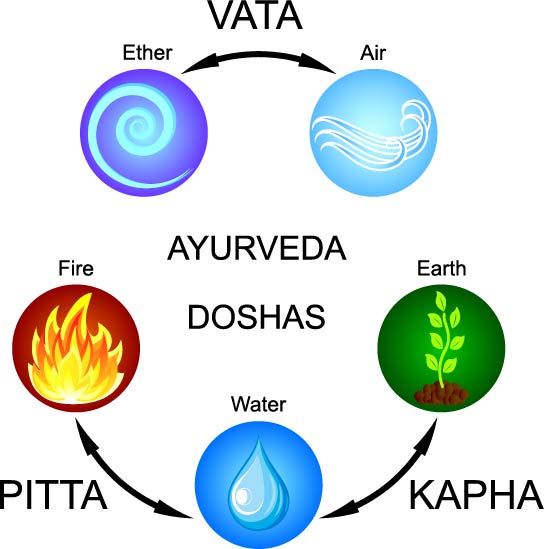
Vata is the subtle energy associated with movement composed of Space and Air. It governs breathing, blinking, muscle and tissue movement, pulsation of the heart, and all movements in the cytoplasm and cell membranes. In balance, vata promotes creativity and flexibility. Out of balance, vata produces fear and anxiety.
General guidelines for balancing Vata:
Pitta expresses as the body’s metabolic System made up of Fire and Water. It governs digestion, absorption, assimilation, nutrition, metabolism and body temperature. In balance, pitta promotes understanding and intelligence. Out of balance, pitta arouses anger, hatred and jealousy.
General guidelines for balancing Pitta:
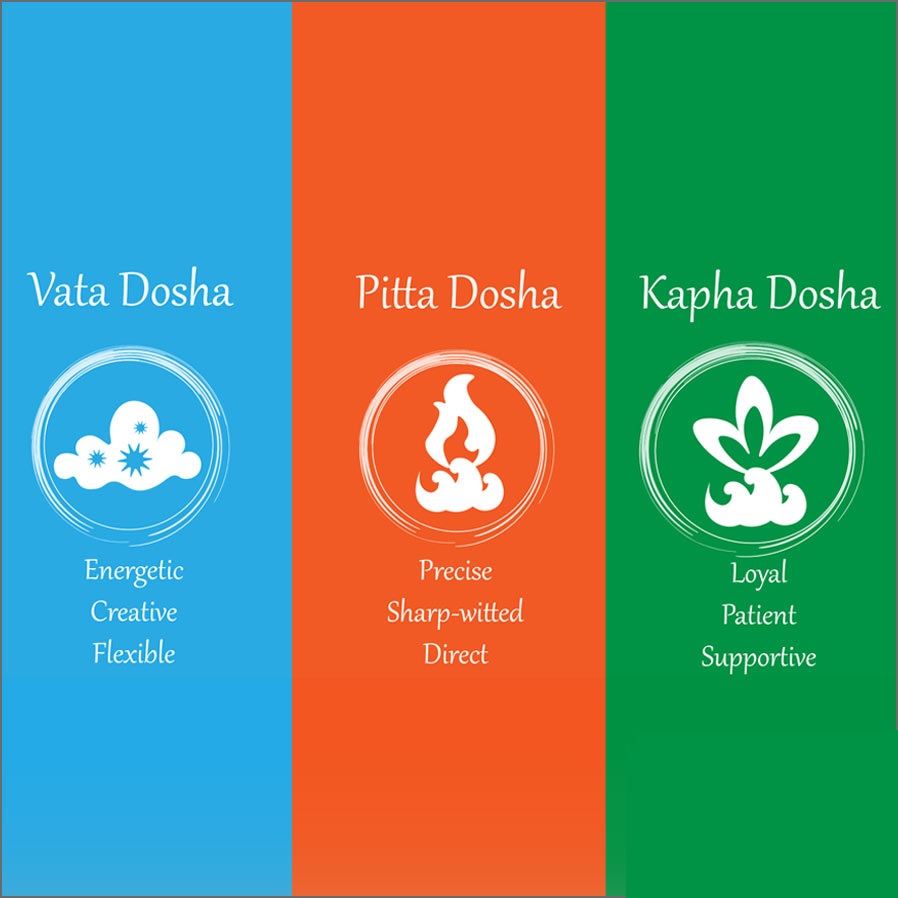
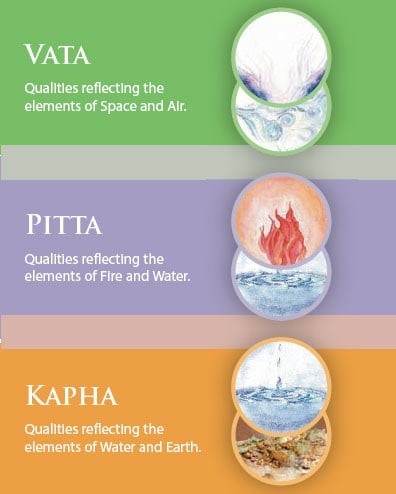
Kapha is the energy that forms the body’s structure bones, muscles, tendons — and provides the “glue” that holds the cells together, formed from Earth and Water. Kapha supplies the water for all bodily parts and systems. It lubricates joints, moisturizes the skin, and maintains immunity. In balance, kapha is expressed as love, calmness and forgiveness. Out of balance, it leads to attachment, greed and envy. Life presents us with many challenges and opportunities. Although there is much over which we have little control, we do have the power to decide about some things, such as diet and lifestyle. To maintain balance and health, it is important to pay attention to these decisions. Diet and lifestyle appropriate to one’s individual constitution strengthen the body, mind and consciousness.
General guidelines for balancing Kapha:
The basic difference between Ayurveda and Western allopathic medicine is important to understand. Western allopathic medicine currently tends to focus on symptomatology and disease, and primarily uses drugs and surgery to rid the body of pathogens or diseased tissue. Many lives have been saved by this approach. In fact, surgery is encompassed by Ayurveda. However, drugs, because of their toxicity, often weaken the body. Ayurveda does not focus on disease. Rather, Ayurveda maintains that all life must be supported by energy in balance. When there is minimal stress and the flow of energy within a person is balanced, the body’s natural defense systems will be strong and can more easily defend against disease. It must be emphasized that Ayurveda is not a substitute for Western allopathic medicine. There are many instances when the disease process and acute conditions can best be treated with drugs or surgery. Ayurveda can be used in conjunction with Western medicine to make a person stronger and less likely to be afflicted with disease and/or to rebuild the body after being treated with drugs or surgery. We all have times when we don’t feel well and recognize that we’re out of balance. Sometimes we go to the doctor only to be told there is nothing wrong. What is actually occurring is that this imbalance has not yet become recognizable as a disease. Yet it is serious enough to make us notice our discomfort. We may start to wonder whether it is just our imagination. We may also begin to consider alternative measures and actively seek to create balance in our body, mind and consciousness.
Ayurveda encompasses various techniques for assessing health. The practitioner carefully evaluates key signs and symptoms of illness, especially in relation to the origin and cause of an imbalance. They also consider the patient’s suitability for various treatments. The practitioner arrives at diagnosis through direct questioning, observation and a physical exam, as well as inference. Basic techniques such taking the pulse, observing the tongue, eyes and physical form; and listening to the tone of the voice are employed during an assessment. Palliative and cleansing measures, when appropriate, can be used to help eliminate an imbalance along with suggestions for eliminating or managing the causes of the imbalance. Recommendations may include the implementation of lifestyle changes; starting and maintaining a suggested diet; and the use of herbs. In some cases, participating in a cleansing program, called Panchakarma, is suggested to help the body rid itself of accumulated toxins to gain more benefit from the various suggested measures of treatment. In summary, Ayurveda addresses all aspects of life — the body mind and spirit. It recognizes that each of us is unique; each responds differently to the many aspects of life, each possesses different strengths and weaknesses. Through insight, understanding and experience Ayurveda presents a vast wealth of information on the relationships between causes and their effects, both immediate and subtle, for each unique individual.

Dr. Anant Kumar Bajpai believes to providing effective and readily available medicines to the population of across the Bharat. In his enlightenment Shri Shankhnath Ayurved forever etched in the company in the form of it’s strived to achieve excellence and set new standards. His only mission was to cure people from diseases.
He admits that Ayurveda has been around for thousands of years, and was considered as one of the best ways to treat diseases and lead a healthy lifestyle in ancient India. Owing to the significance in maintaining good health, we started using the principles and concepts of Ayurveda in our modern world too.
Ayurveda blends our modern lifestyle and health-oriented habits with the ancient wisdom of using natural substances, medicines and herbs to help us lead a healthy, happy, stress-free and disease-free life.
“The cardinal aim of Ayurveda is to restore the individual balance between mind, body and spirit.”
© 2021-2022. Shri Shankhnath Ayurved . Developed By Raksa Solution